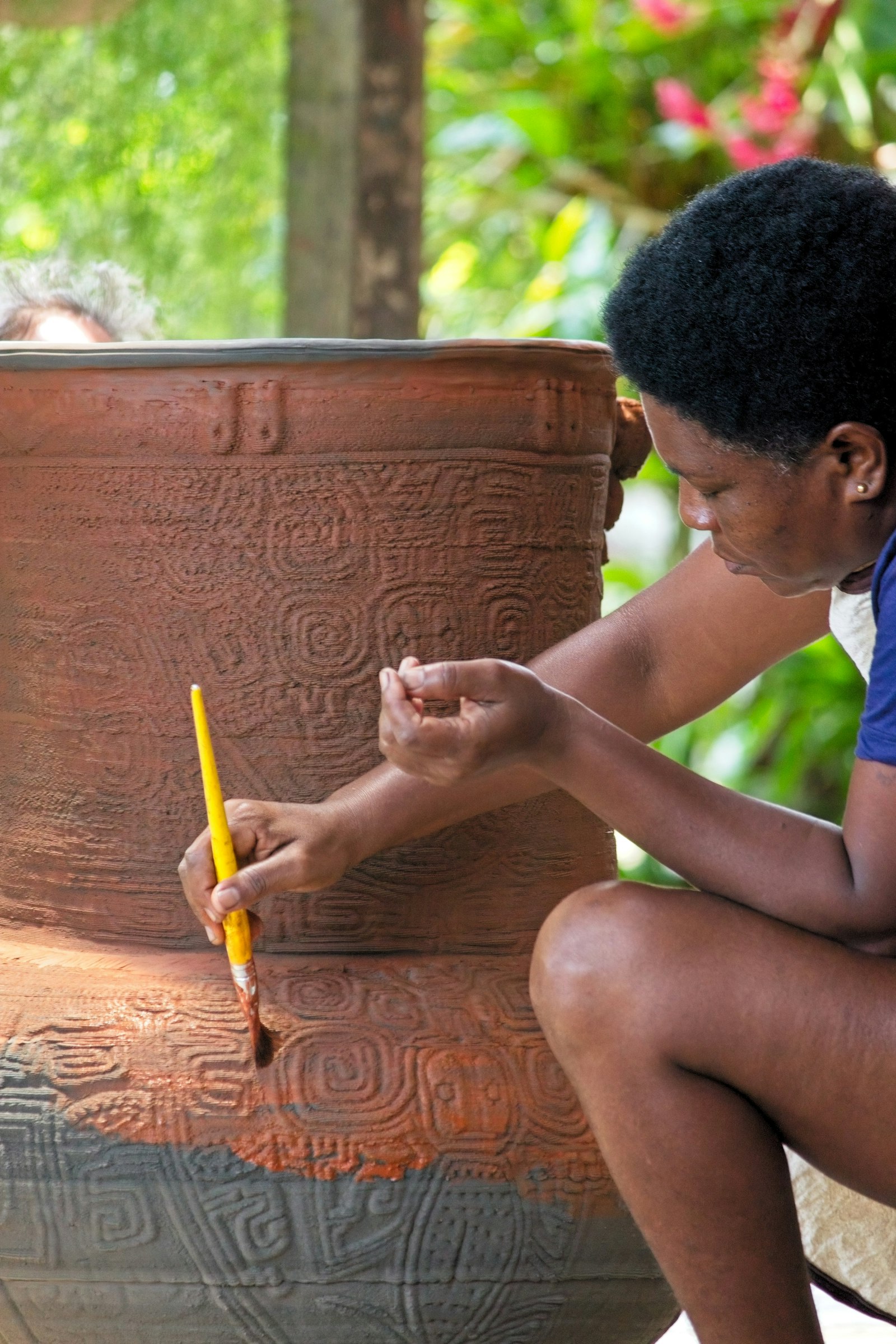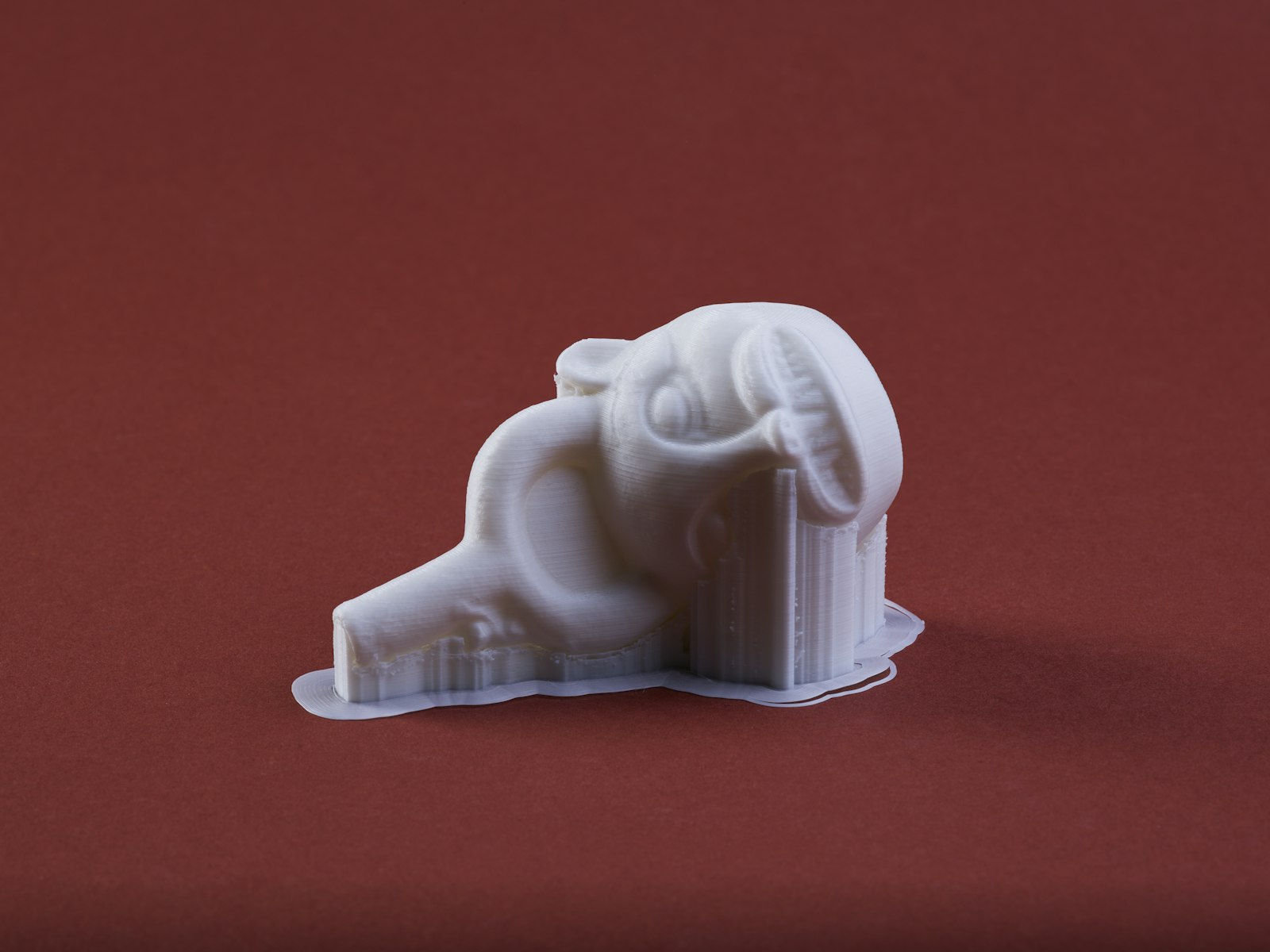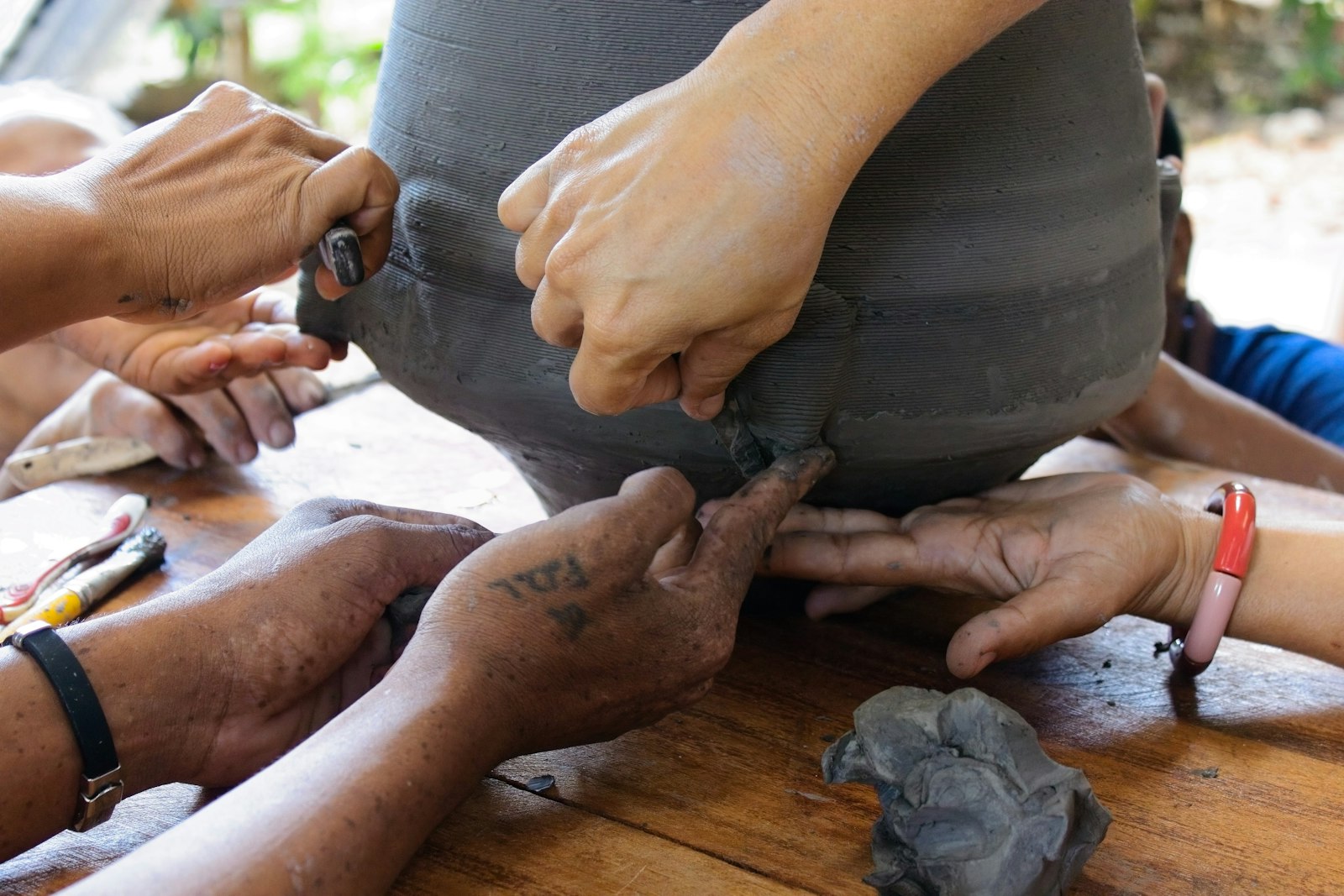de Velde
Atlas of Lost Finds
Atlas of Lost Finds is a study on the significant rematerialisation of lost heritage in collaboration with local communities and digital technologies.
Atlas of Lost Finds is a research project that emerged following the devastating fire at the Brazilian National Museum, which reduced 18 million artefacts to ash. 3D scans produced before the fire are now one of the few remaining traces, surviving as digital ‘ghosts’. The project brings together researchers and makers to breathe new life into lost artefacts and give them a contemporary significance. In a 2020 case study, the project focused on a Peruvian Chimu container. Inspired by the digital 3D model, 30 artists and creators created new objects from contemporary perspectives. A case study in 2022 focused on pre-Columbian ceramics from the Marajó region of Brazil. A multidisciplinary team worked together on-site to create large funeral urns by combining 3D printing in clay and traditional craftsmanship.
The jury on Atlas of Lost Finds:
The jury appreciates the well-argued, in-depth, multi-layered research based on a social question. This project also has an emotional charge and involves today's local people in a heritage project across generations. History, contemporary technology and heritage are being brought together. Craft and technology are being used in a surprising way to revive destroyed heritage and make it relevant. By using technology, the designer, together with the community, transforms historical objects into a contemporary interpretation of them. It takes courage to interfere in heritage and to give creativity a place in the recovery process.
What does this award mean to you?
This award is primarily an acknowledgement for the passionate work of a group of researchers and creators, driven by a common outcry over the loss of cultural heritage. This award draws attention to a disaster under-reported in the Western media and reminds us of the capricious nature of our collective attention. As the world was reeling from the Notre Dame fire in Paris and financial support poured in, scant attention was paid to the destruction of the irreplaceable collection of the National Museum of Brazil just months earlier. It is a vote for decolonisation, emphasising inequality in the preservation and restoration of heritage and recognising the global South and the right to access its cultural memory.
What makes your project so special?
What makes the Atlas of Lost Finds Marajoara project special is the residence on Marajó island in the Amazon River, the same place where the original urns were produced centuries ago. Both then and now, this happened in a context of strong community spirit. The use of the same clay and pigments that the river has left on its banks for centuries brings a deeper layer of authenticity and connection to the past into the project. As well as bringing artefacts to life, the project brings to life the centuries-old traditions and knowledge of the communities they have created.
How does it contribute to a better world?
This project gives access to heritage that has been the victim of destruction. It uses ubiquitous digital technology to reopen that heritage to local and indigenous communities that rarely have access to their own. Moreover, it bridges the cultural gap between local communities and Western knowledge institutions. This allows communities to explore and share their own heritage, while museums can contextualise and decolonise their collections. The project aims for a holistic approach to cultural conservation that focuses not on the individual artefact but on the stories and values it represents, such as the history of the Amazon and the role of indigenous cosmovision in protecting the forest.










